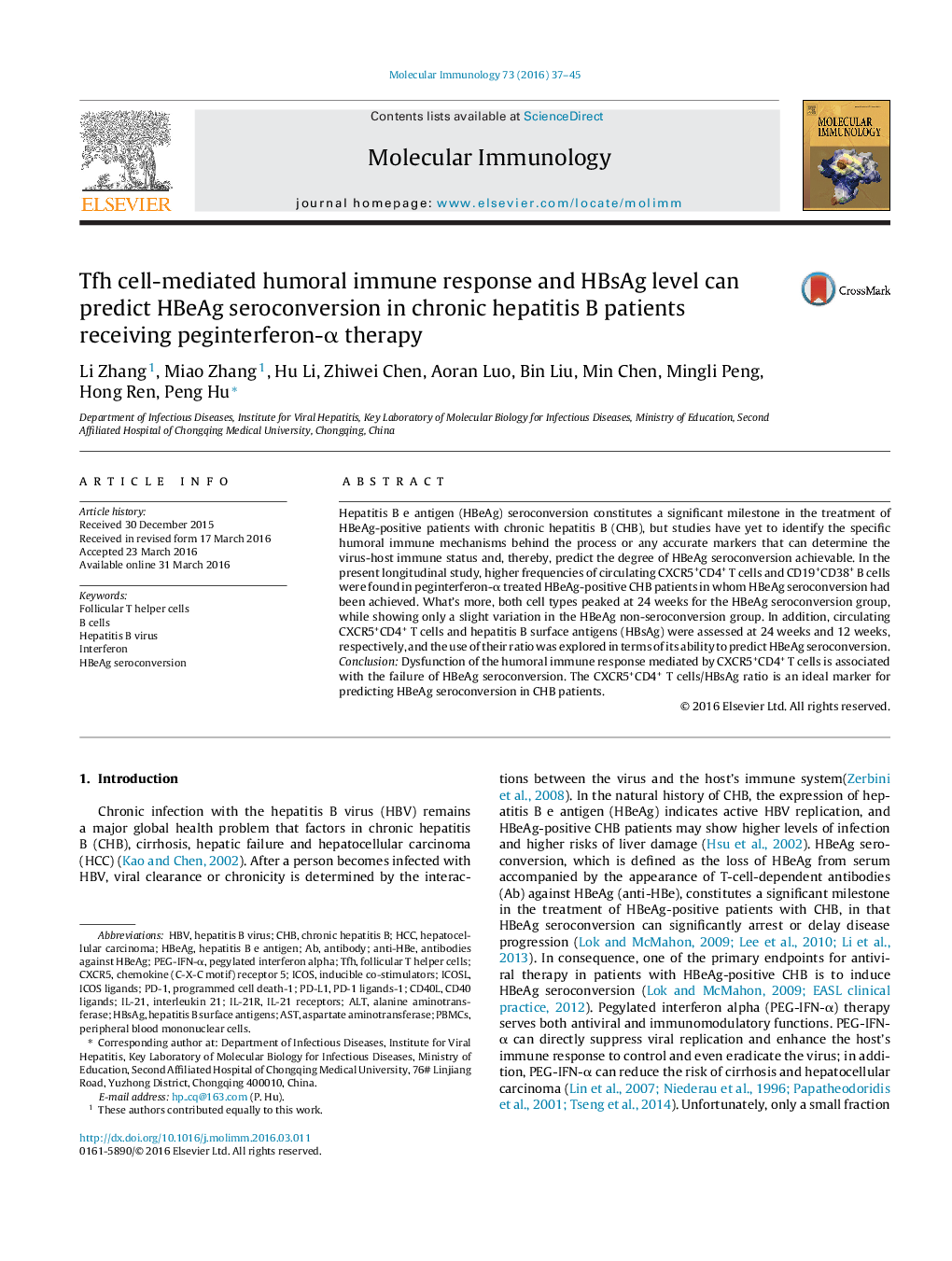| Article ID | Journal | Published Year | Pages | File Type |
|---|---|---|---|---|
| 5916315 | Molecular Immunology | 2016 | 9 Pages |
â¢Higher frequency of circulating TFH cells is found in patients with HBeAg seroconversion.â¢HBeAg seroconversion is associated with higher frequency of CD19+CD38+ B cells.â¢Dysfunction of humoral immune response may causes the failure of HBeAg seroconversion.â¢The TFH cells/HBsAg ratio is an ideal marker for predicting HBeAg seroconversion.
Hepatitis B e antigen (HBeAg) seroconversion constitutes a significant milestone in the treatment of HBeAg-positive patients with chronic hepatitis B (CHB), but studies have yet to identify the specific humoral immune mechanisms behind the process or any accurate markers that can determine the virus-host immune status and, thereby, predict the degree of HBeAg seroconversion achievable. In the present longitudinal study, higher frequencies of circulating CXCR5+CD4+ T cells and CD19+CD38+ B cells were found in peginterferon-α treated HBeAg-positive CHB patients in whom HBeAg seroconversion had been achieved. What's more, both cell types peaked at 24 weeks for the HBeAg seroconversion group, while showing only a slight variation in the HBeAg non-seroconversion group. In addition, circulating CXCR5+CD4+ T cells and hepatitis B surface antigens (HBsAg) were assessed at 24 weeks and 12 weeks, respectively, and the use of their ratio was explored in terms of its ability to predict HBeAg seroconversion.ConclusionDysfunction of the humoral immune response mediated by CXCR5+CD4+ T cells is associated with the failure of HBeAg seroconversion. The CXCR5+CD4+ T cells/HBsAg ratio is an ideal marker for predicting HBeAg seroconversion in CHB patients.
